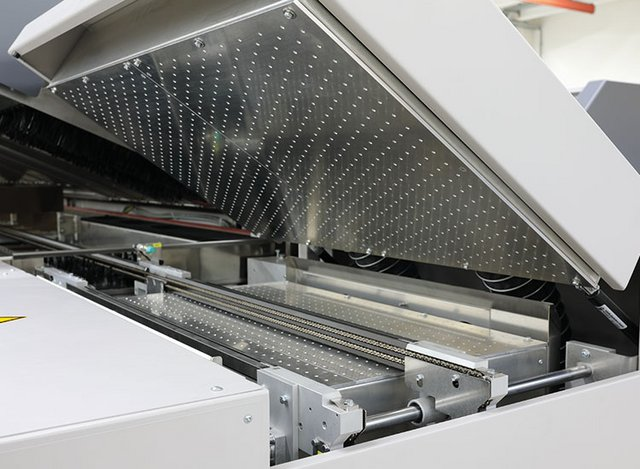Differences between reflow soldering machine and wave soldering machine
Release time:2023-12-29Publisher:Jeenoce
Reflow soldering machine and wave soldering machine are two commonly used soldering methods in SMT electronic product production, and their differences are:
Reflow soldering machine: The reflow soldering machine heats air or nitrogen to a sufficiently high temperature and blows it towards the circuit board where the components have already been attached, allowing the solder on both sides of the SMT components to melt and bond with the motherboard. After cooling, the soldering is completed and used for SMT components.
Wave soldering: Wave soldering is the process of directly contacting the welding surface of the plug-in board with high-temperature liquid tin to achieve the welding purpose. The high-temperature liquid tin maintains a slope, and a special device causes the liquid tin to form waves like phenomena. The pins of the plugin undergo "waves" to achieve soldering. Used for soldering plug-in components, which are usually manually placed.
The difference between peak welding machine and reflow welding machine:
Reflow soldering process is the process of remelting and pre distributing paste like solder to the solder pads of printed circuit boards, completing the mechanical and electrical connection between the solder ends or pins of externally assembled components and the solder pads of printed circuit boards.

Wave soldering has emerged as a new welding process with the increasing awareness of environmental protection among people. Previously, tin lead alloy was used, but lead is a heavy metal that causes great harm to the human body. So now there is the emergence of lead technology. It uses tin silver copper alloy and special soldering flux, and the requirements for welding temperature are higher and higher. In addition, a cooling zone workstation should be set up after the PCB board passes through the welding area. This is to avoid thermal shock, and if there is ICT, it will affect the detection
Wave soldering can basically be understood as soldering slightly larger and smaller components, which is different from reflow soldering. Reflow soldering heats up the board and components, which actually liquefies the previously applied solder paste to achieve the goal of connecting the components to the board
a. Reflow soldering passes through preheating zone, reflow zone, and cooling zone. Wave soldering is suitable for hand inserted boards and adhesive boards, and requires all components to be heat-resistant. The surface of the SMT solder paste cannot have components from the previous SMT solder paste. SMT solder paste boards can only be reflow soldered and cannot be used for wave soldering.
b. Wave soldering is the process of dissolving tin bars into a liquid state through a tin bath, which is stirred by a motor to form waves, allowing PCBs to be soldered together with components. It is generally used for soldering hand inserts and SMT adhesive boards. Reflow soldering is primarily used in the SMT industry, as it melts the solder paste printed on the PCB and welds the parts together through hot air or other thermal radiation conduction.
c. Different processes: Wave soldering requires spraying flux first, followed by preheating, welding, and cooling zones.

